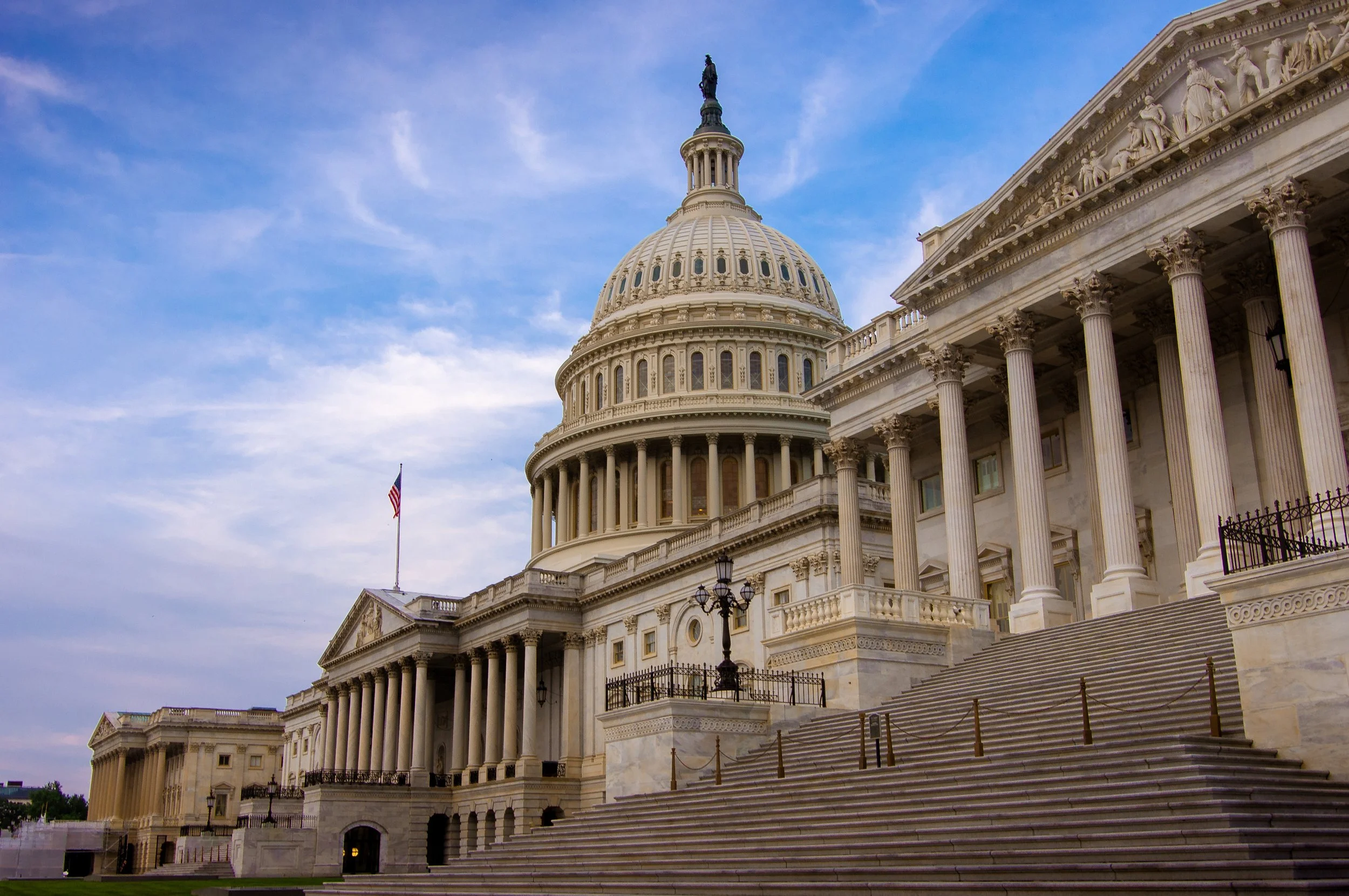We project that corporate tax revenue will decrease by $276 billion over 10 years on a conventional basis due to changes in international tax provisions related to the Section 250 deduction under OBBBA.
The Cost of the Employee Retention Tax Credit
PWBM estimates that the COVID-era Employee Retention Credit (ERC) will have cost more than $300 billion when the IRS finishes processing claims later in 2025, nearly four times the initial projected cost. Most of the ERC was paid retroactively, well after pandemic-related economic disruptions had ended, limiting its effectiveness as a worker retention incentive.
Effective Tariff Rates and Revenues (Updated through June 2025)
The USITC recently released updated trade and tariff data. We use this data to provide up-to-date estimates of customs revenue and effective tariff rates through June 2025.
President Trump-Signed Reconciliation Bill: Budget, Economic, and Distributional Effects
We estimate the reconciliation bill signed by President Trump increases primary deficits by $3.2 trillion over 10 years. The dynamic cost, including changes to the economy, is larger at $3.6 trillion. GDP falls by 0.3 percent in 10 years and 4.6 percent in 30 years.
Senate-Passed Reconciliation Bill: Budget, Economic, and Distributional Effects
We estimate the Senate-passed reconciliation bill increases primary deficits by $3.2 trillion over 10 years. The dynamic cost, including changes to the economy, is larger at $3.6 trillion. GDP falls by 0.3 percent in 10 years and 4.6 percent in 30 years.
The House-Passed Reconciliation Bill: Illustrative Budget, Economic, and Distributional Effects with Permanence
If spending and tax changes in the House-passed reconciliation bill are made permanent, federal debt increases by 9.9 percent in 10 years and 22.9 percent in 30 years. GDP decreases by 3.6 percent, and wages fall by 2.9 percent. Dynamic costs exceed conventional costs in the budget window.
The House-Passed Reconciliation Bill: Budget, Economic, and Distributional Effects
We estimate the House-passed reconciliation bill increases primary deficits by $2.7 trillion over 10 years. GDP rises slightly, as labor supply and savings respond to a reduced social safety net, but the dynamic score is larger ($3.1 trillion) than the conventional.
House Reconciliation Bill: Illustrative Calculations with Permanence (May 20, 2025)
If spending and tax changes in Reconciliation are made permanent, federal debt increases by 11.1 percent in 10 years and 24.3 percent in 30 years. GDP remains flat and wages fall by 0.5 percent. Dynamic costs exceed conventional costs in the budget window.
House Reconciliation Bill: Budget, Economic, and Distributional Effects (May 19, 2025)
We estimate the House reconciliation bill increases primary deficits by $3.3 trillion over 10 years. Even so, GDP rises in the short and long term, as precautionary increases in labor supply and savings respond to a reduced social safety net.
Budget Reconciliation Options with Permanent Business Tax Extenders
Our previous analysis demonstrated that the Trump Administration's major tax proposals would require expiration if combined with the FY2025 House budget reconciliation. This brief considers several options to make the business tax extenders portion permanent using a combination of different horizons for spending cuts and individual tax extenders.
Raising Top Ordinary Rates: Options under TCJA Extension (Updated)
Under current law, the 2017 Tax Cuts and Jobs Act (TCJA) will expire at the end of 2025, raising personal income tax rates back to 2017 levels. Some lawmakers propose extending the TCJA but with higher rates for high-income households. We consider three options.
Tax Collections Remain Strong in 2025 Despite IRS Concerns
Treasury data through April 28 shows that tax receipts are broadly in line with government projections made earlier this year, before the downsizing of the IRS was announced. Receipts from tariffs have significantly exceeded projections.
Real-Time Federal Budget Tracker
The Real-Time Federal Budget Tracker reports the federal government’s daily cash operations, including daily spending, receipts, and deficits.
The FY2025 House Budget reconciliation and Trump Administration Tax Proposals: Budgetary, Economic, and Distributional Effects
We estimate that incorporating the Trump administration’s major tax proposals into the FY2025 House budget reconciliation would require that the provisions mostly sunset by December 31, 2033. Even so, primary deficits would increase by $5.1 trillion before economic effects and by $4.9 trillion after modest, positive economic effects. Both primary deficit estimates are larger than the cap of $2.8 trillion allowed in budget reconciliation. High-income households gain the most while lower-income households gain less or even lose, depending on how the spending cuts are distributed.
Eliminating Income Taxes on Social Security Benefits
Eliminating taxes on Social Security benefits reduces incentives to save and work while increasing federal debt. Wages and GDP fall over time. The policy primarily benefits high-income households nearing or in retirement while harming households under thirty and all future generations across the entire income distribution.
Eliminating Excess Benefits from the Section 199A Deduction: Options for Reform under TCJA Extension
The deduction for pass-through income under section 199A provides a benefit in excess of 20 percent (“excess benefit”) for some taxpayers due to its interaction with the progressive tax rate system. As Congress considers extending 199A beyond 2025, options to remove the excess benefit while maintaining the 20 percent tax benefit could raise between $46B and $178B over the 10-year budget window, depending on design.
Principles-Based Illustrative Reforms of Federal Tax and Spending Programs
A package of 13 major tax and spending reforms, based on standard public economics design principles, is shown to reduce federal debt, increase social insurance, and expand the economy more than any previously analyzed policies by PWBM.
Update on the Revenue Effects of GILTI and FDII, 2026 Rate Changes, and Proposed Policy Reforms
We analyze new data from the US Treasury to examine historical revenue effects of TCJA’s international corporate tax provisions. We also provide updated conventional estimates to assess the revenue impact of scheduled 2026 rate increases on foreign income of US corporations and assess several proposals that aim to further increase tax revenue.
Taxing Foreign Affiliates of U.S.-Domiciled Firms
We explain how the PWBM uses its dynamic Overlapping Generation (OLG) model to analyze tax policies affecting foreign-earned income by affiliates of U.S.-domiciled firms. We evaluate two illustrative policy changes: we show how firms’ tax liabilities and the allocation of capital between domestic and international production are affected by an increase in foreign tax rates and a decrease in U.S. tax exemptions on foreign-derived income.
The End of the Double Irish: Implications for US Multinationals and Global Tax Competition
After Ireland ended the Double Irish tax planning strategy in 2020, US firms with historical links to Ireland have shifted their intellectual property (IP) away from traditional tax havens to Ireland and the US to take advantage of tax incentives offered by both countries. This has coincided with a significant increase in Irish corporate tax revenue, particularly for less capital-intensive firms. Repatriation of foreign earnings to the United States has also increased, but fiscal benefits to the US have been offset by tax incentives passed under TCJA.



















